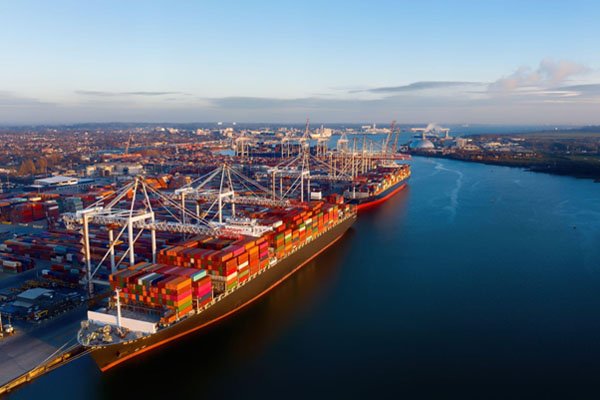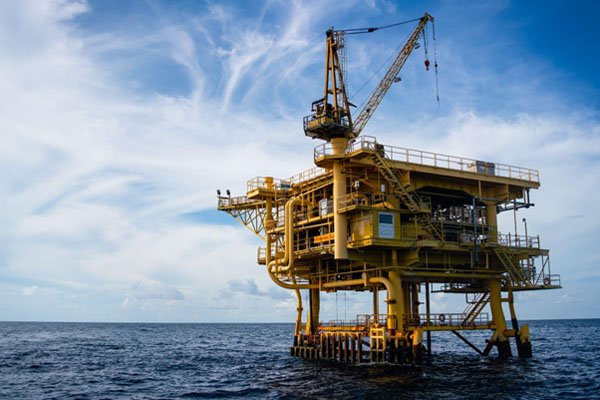Smart Analytics for Proactive Threat Detection in Ports and Harbors

An estimated 11 billion tons of cargo pass through global ports and harbors every year, illustrating the importance of maritime facilities to international trade. However, as with other examples of critical infrastructure, this importance can introduce unique security challenges.
Port security teams face continual threats of theft, unauthorized access, smuggling, and acts of sabotage that often require continuous observation to reliably address. In high-traffic and fast-paced maritime environments, these workflows can place significant strain on operators.
To help improve security outcomes and reduce operator fatigue, many facilities are exploring ways to integrate smart technologies into traditional security workflows. For maritime security personnel and facility operators interested in the practical benefits of such technologies, this article discusses how smart analytics support proactive threat detection in ports and harbors.
Common Security Challenges for Maritime Facilities
The fast-paced and complex nature of port operations can introduce unique challenges that hinder traditional security operations. When designing effective security installations, leaders must ensure hardware and related workflows are optimized to navigate the following challenges.
Inconsistent Visibility
Securing and maintaining required visibility into port operations can be uniquely challenging due to the scope and complexity of maritime infrastructure. Moving containers, vehicles, and equipment can obscure security cameras accidentally or intentionally, creating blind spots that intruders can use to their advantage when attempting to cause damage or steal assets.

Unauthorized Access
Varying degrees of access must be provided to contractors, port authority staff, drivers, and visitors passing through maritime facilities every day. Safely and securely managing access requests manually can be resource-intensive and time-consuming, introducing the potential for operator fatigue or miscommunication to accidentally expose high-risk areas to intruders.
Environmental Hazards
Harsh weather conditions like heavy rain and fog can obscure camera feeds and negatively impact security operations, making it hard to reliably identify hazards and emerging threats. In addition, high winds and salt spray can damage physical hardware over time, introducing significant risks associated with cameras and sensors going offline at inopportune moments. Saltwater damage can impact the ROI of security devices, which is why most maritime ports opt for stainless steel cameras.
Operator Fatigue
A typical port or harbor can have hundreds of security cameras in operation at any one time, with camera feeds requiring constant observation to identify hazards and threats. Performing this task manually can place significant strain on human operators, raising the risk of subtle anomalies being overlooked and alerts being missed that could expose wider vulnerabilities.
How Smart Analytics Drive Proactive Port Security Operations
Smart analytics and AI-powered security cameras are showing promise in helping maritime security teams overcome industry-specific challenges. Modern coastal detection imbued with intelligent features can autonomously identify site-specific hazards and risks, allowing operators to proactively address threats without continuously observing feeds.

Intelligent Object Detection
Intelligent security cameras equipped with smart analytics tools can autonomously identify objects and persons of interest across complex areas of operation. Cameras can be programmed to immediately alert operators if an unknown object, person, or vehicle enters a target area, enabling teams to proactively combat emerging security threats. Additionally, cameras can be long-range for offshore detection, ensuring no one approaches unannounced.
Through deep learning, cameras equipped with smart analytics software can learn expected behavior over time, helping to ensure subtle and novel anomalies don’t go unnoticed. Smart analytics can help operators identify common issues like cameras being obscured by moving vehicles and equipment, to help proactively address common visibility challenges.
Occupancy Counting
Smart camera analytics can help ensure only select individuals and a number of persons can access high-risk areas. Cameras can be programmed to warn operators when occupancy levels surpass a predetermined threshold, with object classification features helping to ensure only authorized people can enter secure areas unimpeded.
Advanced smart analytics can also be configured to trigger responses when select objects and persons move into regions of interest. It can alert operators and activate wider security responses if a person, object, or vehicle enters a high-risk area or moves in a prohibited direction of travel to help address emerging security concerns swiftly.
Predictive Maintenance
Smart camera analytics software can be configured to identify signs of damage and wear to critical equipment and infrastructure. Pattern recognition and anomaly detection features can help facility managers spot subtle defects and operational issues associated with important equipment, helping staff to perform required maintenance before vulnerabilities are exposed.
Smart analytics can also analyze operational data associated with security cameras themselves to help ensure devices function optimally. Via automated health, tamper detection, and performance detection features, smart analytics software can warn operators of emerging issues that may impact camera functionality and suggest required maintenance.
Autonomous Threat Detection
Cameras equipped with smart analytics can autonomously identify and warn operators of suspicious activities and dangerous behaviors across complex target areas. On and off-site teams can be sent remote, real-time alerts containing links to relevant footage and camera feeds to support operators in planning and enacting informed responses to emerging threats.
By providing security staff with real-time, intelligent alerts that can be accessed via secure smart devices, leaders can remove the need for operators to continuously observe camera feeds. This workflow can help to reduce operator fatigue and enable security staff to focus on more complex aspects of their roles to help ensure threats are addressed appropriately.
Summary
Effectively and efficiently managing security operations across complex maritime facilities can be uniquely challenging, often requiring operators to continuously observe security feeds to manually identify anomalies, environmental hazards, and signs of emerging safety threats.
Traditional workflows can place significant strain on human teams and introduce risks related to operator fatigue, raising the risk of missed alerts resulting in significant security breaches.
By enhancing existing security with smart analytics, leaders can develop workflows whereby operators are warned of emerging risks in real-time. Cameras can provide detailed, data-rich insights into suspicious events and trigger automated security responses, enabling security teams to focus on matters of importance and proactively address identified threats.
About the author:
Jose Rojas is a sales engineering manager at Pelco with 25 years of experience supporting enterprise customers around the world. He focuses on delivering tailored technical solutions and leading an engineering team that meets the needs of mission-critical clients.
This article is provided by Pelco.
The opinions expressed herein are the author's and not necessarily those of The Maritime Executive.
